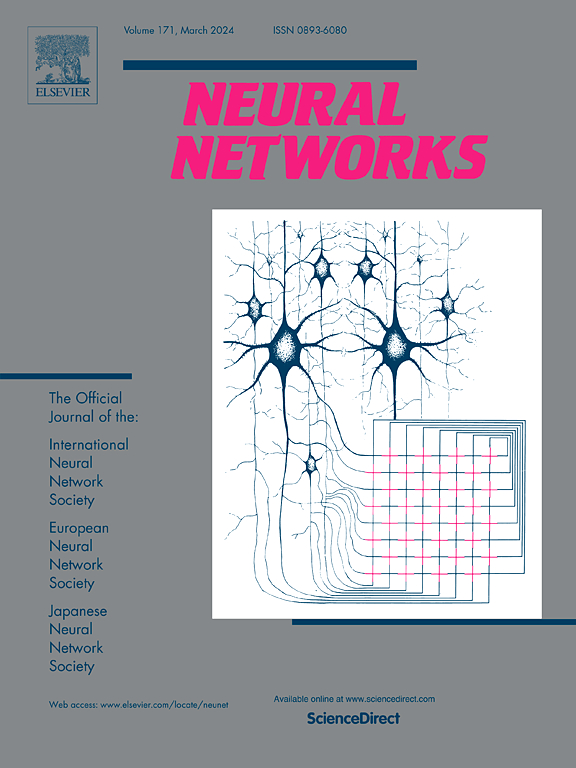连接组学驱动的分析揭示了小鼠视觉皮层边界区域的新特征
IF 6.3
1区 计算机科学
Q1 COMPUTER SCIENCE, ARTIFICIAL INTELLIGENCE
引用次数: 0
摘要
长期以来,利用视网膜定位图将视觉皮层分割成其各自的子区域一直是表征小鼠大脑视觉区域功能组织的典型方法。然而,随着像MICrONS这样广泛的连接组学数据集的出现,我们现在可以进行更细粒度的分析,以更好地表征视觉皮层的结构和功能。在这项工作中,我们提出了一个统计框架来分析MICrONS数据集,特别是V1, RL和AL视觉区域。除了确定这些区域之间的几个结构和功能差异外,我们还关注了这些区域之间的边界。通过对比V1-RL和RL-AL边界区域,我们发现不同视觉区域之间的边界在结构和功能上是不同的。此外,我们发现V1-RL边界区比V1和RL区域具有更大的突触连通性和更多的同步神经活动。我们通过测量突触上的信息流进一步分析了结构和功能,观察到V1-RL边界似乎充当了V1和RL视觉区域之间的桥梁。总的来说,我们确定了许多将V1-RL边界与更大的V1-RL网络区分开来的措施,这可能促使其作为小鼠视觉皮层中一个独特区域的特征。本文章由计算机程序翻译,如有差异,请以英文原文为准。
A connectomics-driven analysis reveals novel characterization of border regions in mouse visual cortex
Leveraging retinotopic maps to parcellate the visual cortex into its respective sub-regions has long been a canonical approach to characterizing the functional organization of visual areas in the mouse brain. However, with the advent of extensive connectomics datasets like MICrONS, we can now perform more granular analyses to better characterize the structure and function of the visual cortex. In this work, we propose a statistical framework for analyzing the MICrONS dataset, particularly the V1, RL, and AL visual areas. In addition to identifying several structural and functional differences between these regions, we focus on the borders between these regions. By comparing the V1-RL and RL-AL border regions, we show that different boundaries between visual regions are distinct in their structure and function. Additionally, we find that the V1-RL border region has greater synaptic connectivity and more synchronous neural activity than the V1 and RL regions individually. We further analyze structure and function in tandem by measuring information flow along synapses, observing that the V1-RL border appears to act as a bridge between the V1 and RL visual areas. Overall, we identify numerous measures that distinguish the V1-RL border from the larger V1-RL network, potentially motivating its characterization as a distinct region in the mouse visual cortex.
求助全文
通过发布文献求助,成功后即可免费获取论文全文。
去求助
来源期刊

Neural Networks
工程技术-计算机:人工智能
CiteScore
13.90
自引率
7.70%
发文量
425
审稿时长
67 days
期刊介绍:
Neural Networks is a platform that aims to foster an international community of scholars and practitioners interested in neural networks, deep learning, and other approaches to artificial intelligence and machine learning. Our journal invites submissions covering various aspects of neural networks research, from computational neuroscience and cognitive modeling to mathematical analyses and engineering applications. By providing a forum for interdisciplinary discussions between biology and technology, we aim to encourage the development of biologically-inspired artificial intelligence.
 求助内容:
求助内容: 应助结果提醒方式:
应助结果提醒方式:


